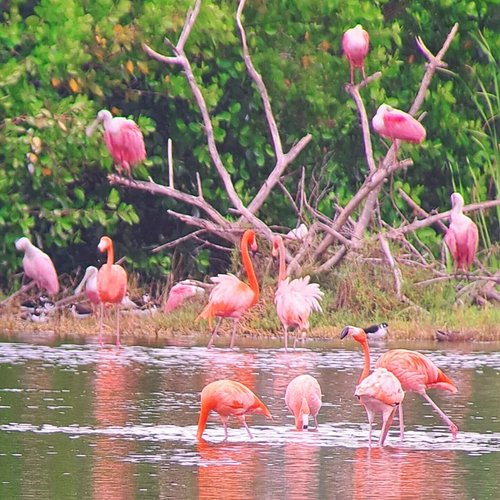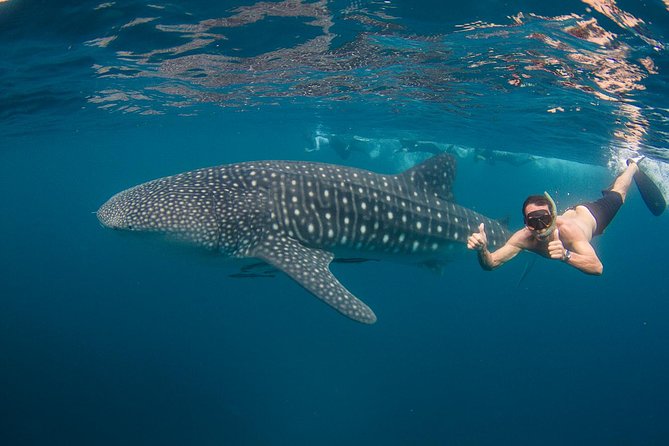Dive into Paradise: Unforgettable Snorkeling and Diving Adventures in Eco-Friendly Havens

Dive into Paradise: Unforgettable Snorkeling and Diving Adventures in Eco-Friendly Havens
The allure of the ocean depths has captivated travelers for centuries, but today's adventurers seek more than just breathtaking views. Eco-tourism is on the rise, with a growing desire to explore the underwater world responsibly and sustainably. Choosing destinations that prioritize marine conservation is no longer a trend but a necessity. We're diving into three premier locations renowned for their commitment to protecting our oceans while offering unparalleled snorkeling and diving experiences: Raja Ampat in Indonesia, Cayo Coco in Cuba, and Ningaloo Reef in Western Australia. Get ready to discover vibrant coral reefs, unique marine life, and sustainable practices that make these destinations true paradises for the conscious traveler.
Section 1: Raja Ampat, Indonesia: The Crown Jewel of Marine Biodiversity
Imagine soaring limestone islands carpeted in lush greenery, rising majestically from the shimmering turquoise waters. This is Raja Ampat, a remote archipelago in Indonesia, often hailed as the "crown jewel" of marine biodiversity. Below the surface lies a world exploding with color and life. Picture vibrant coral reefs, teeming with schools of shimmering fish that dance in the sunlight. Manta rays glide effortlessly through the water, their graceful movements a mesmerizing sight. The intricate details of both hard and soft corals are illuminated by the crystal-clear water, revealing a kaleidoscope of textures and forms. Every dive or snorkel in Raja Ampat is an immersive experience, a journey into a thriving underwater ecosystem unlike any other.
Raja Ampat boasts an astonishing concentration of endemic species, creatures found nowhere else on Earth. Keep an eye out for the tiny pygmy seahorses, clinging delicately to gorgonian corals, their camouflage skills a marvel of nature. For the truly fortunate, encounters with whale sharks, the gentle giants of the sea, and reef sharks are a possibility, adding an extra thrill to your underwater adventure. The biodiversity is so high, new species are still being discovered regularly.
Conservation is paramount in Raja Ampat. Community-based marine protected areas (MPAs) play a crucial role in safeguarding the region's rich biodiversity. These initiatives empower local communities to manage their marine resources sustainably. Organizations like Conservation International and Misool Foundation are actively working with local communities to protect Raja Ampat's fragile ecosystems through research, education, and sustainable tourism practices. Eco-friendly diving resorts are also popping up in the region, that are committed to sustainable practices.
The best time to visit Raja Ampat is between October and April, when the seas are calmer and visibility is optimal. Diving requires certification, and permits may be required for certain areas. Remember to maintain neutral buoyancy, avoid touching corals, and refrain from using single-use plastics. These small actions contribute significantly to preserving Raja Ampat's incredible marine environment.
Section 2: Cayo Coco, Cuba: Flamingo Paradise and Snorkeling Bliss
Cayo Coco, a stunning island off the coast of Cuba, offers a different kind of underwater experience, one characterized by tranquility and unique wildlife encounters. Imagine a calm, shallow turquoise lagoon stretching out to the horizon, reflecting the clear blue sky. The atmosphere is serene and peaceful, punctuated by the sight of thousands of pink flamingos wading gracefully in the shallows. The underwater landscape is primarily sandy, dotted with seagrass beds that serve as a nursery for a myriad of marine creatures. Expect to see juvenile fish darting amongst the seagrass, colorful starfish scattered across the seabed, and vibrant sponges clinging to the sandy bottom.

The true highlight of snorkeling in Cayo Coco is the opportunity to observe and, with respect, snorkel alongside these magnificent birds. The water is exceptionally clear, and the gentle currents make for easy and relaxing snorkeling. Besides flamingos, you can spot various species of reef fish, including parrotfish, angelfish, and damselfish, as well as a variety of fascinating invertebrates.
Cayo Coco has made conscious efforts to protect its flamingo population and the surrounding marine environment through sustainable tourism practices. Development is carefully limited, and emphasis is placed on eco-friendly activities that minimize impact on the ecosystem. Strict regulations are in place to safeguard the flamingo habitats and prevent disturbance to their feeding habits.
The best time to visit Cayo Coco for snorkeling is between November and April, when the weather is dry and the snorkeling conditions are ideal. Be mindful of specific regulations regarding snorkeling near the flamingo habitats, and always maintain a respectful distance. Avoid disturbing their feeding habits, and be sure to use reef-safe sunscreen to protect the delicate marine environment.
Section 3: Ningaloo Reef, Western Australia: Whale Sharks and Wonders Down Under
Ningaloo Reef, off the coast of Western Australia, presents a dramatic contrast between the rugged, arid Australian coastline and the vibrant, teeming underwater world. Picture dazzling sunlight filtering through the water, illuminating a diverse array of coral formations in a kaleidoscope of colors. The reef is home to an abundance of marine life, but its biggest draw is undoubtedly the opportunity to swim alongside whale sharks, the largest fish in the sea. Imagine the awe-inspiring sensation of being in the water with these gentle giants, marveling at their immense size and graceful movements.

While whale shark encounters are seasonal (typically March to August), Ningaloo Reef offers incredible marine life viewing year-round. Manta rays glide through the water, turtles serenely swim by, and, during their migration season, humpback whales grace the coastline. The reef itself is a vibrant ecosystem, teeming with colorful fish and diverse coral species.
Sustainable tourism is a top priority in Ningaloo Reef. Strict regulations govern interactions with whale sharks to ensure their protection and minimize disturbance. It is crucial to book tours with licensed operators who adhere to these regulations and prioritize the well-being of these magnificent creatures. The Department of Biodiversity, Conservation and Attractions actively monitors the whale shark population and enforces responsible tourism practices.
The best time to visit Ningaloo Reef for whale shark encounters is between March and August. Booking tours with licensed operators is essential. When snorkeling, always follow the instructions of your tour guide, maintain a safe distance from whale sharks, and avoid using flash photography.
Conclusion:
Choosing to travel responsibly and support destinations that prioritize marine conservation is vital for the long-term health of our oceans. Raja Ampat, Cayo Coco, and Ningaloo Reef each offer unique and unforgettable underwater experiences while actively protecting their fragile ecosystems. From the vibrant coral reefs of Raja Ampat to the flamingo-filled lagoons of Cayo Coco and the whale shark encounters of Ningaloo Reef, these eco-friendly havens promise lasting memories and a deeper appreciation for the wonders of the underwater world. Let's explore these incredible destinations with respect and a commitment to preserving their beauty for generations to come.
Call to Action:
Plan your eco-friendly snorkeling or diving adventure today! Visit VistaLocation.com to find sustainable accommodations and tour operators committed to preserving these incredible marine ecosystems.